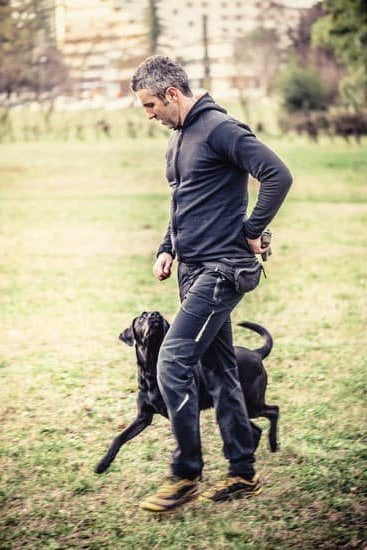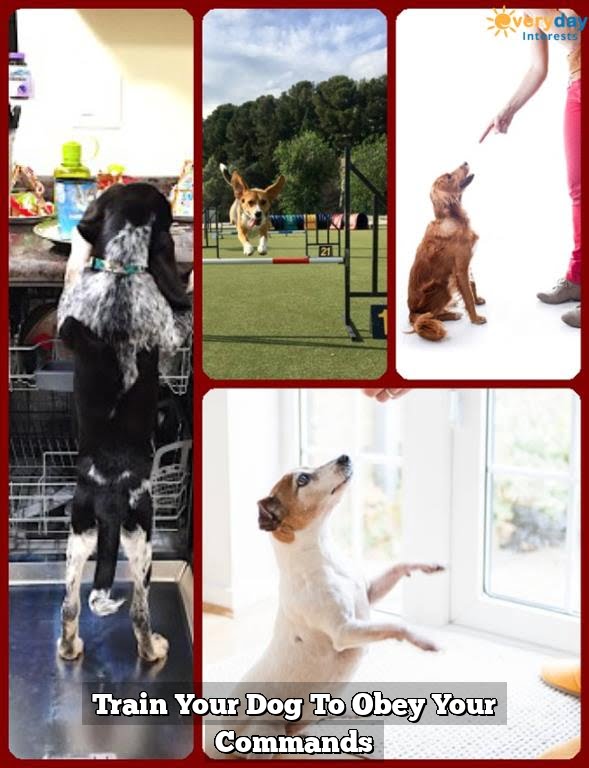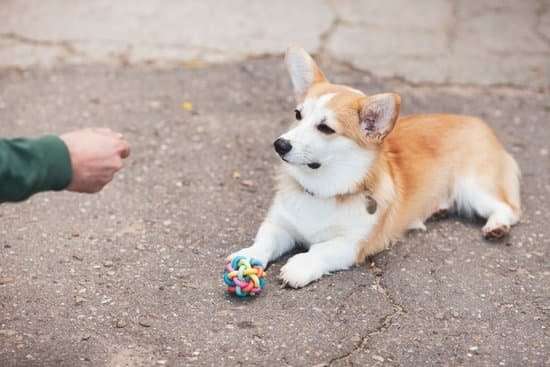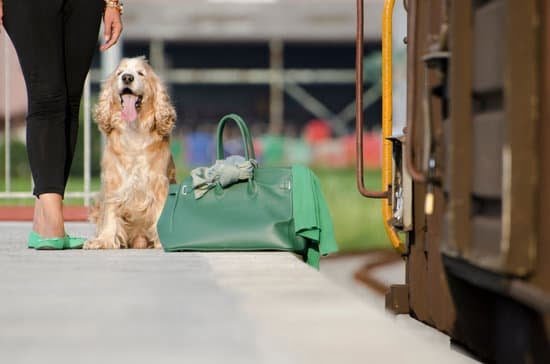Are you struggling to get your dog to go in a carrier? In this article, we will discuss how to train your dog to go in a carrier and the importance of doing so. Whether it’s for travel, trips to the vet, or just as a safe space for your furry friend, teaching your dog to be comfortable in a carrier can have numerous benefits for both you and your pet.
Using a carrier for your dog can provide a sense of security and comfort, especially in unfamiliar or anxiety-inducing situations. Additionally, it makes transportation easier and safer for both you and your dog. However, getting your dog to willingly enter and stay in the carrier can be a challenge. That’s why understanding your dog’s behavior and implementing effective training techniques is crucial.
Before diving into the training process, it’s essential to understand your dog’s behavior towards carriers. Some dogs may have fears or anxieties related to carriers, while others may simply need time and positive reinforcement to become comfortable with them. By addressing these emotions and behaviors, you can tailor the training process to suit your dog’s individual needs.
Understanding Your Dog’s Behavior
Before embarking on the journey of training your dog to go in a carrier, it is crucial to understand your pet’s behavior and mindset. Dogs, like humans, have their own unique personalities and may react differently to various stimuli. When it comes to carriers, some dogs may feel anxious or fearful, while others may be indifferent or even curious. It is essential to recognize these emotions and address them appropriately during the training process.
One way to understand your dog’s behavior towards carriers is through observation and gradual exposure. Take note of how your dog reacts when the carrier is introduced – does it show signs of fear or aggression, or does it display curiosity and interest?
Understanding these initial reactions can help you tailor your training approach to suit your dog’s specific needs. Additionally, gradually exposing your dog to the carrier in a controlled and positive manner can help alleviate any fears or anxieties over time.
It is also important to consider your dog’s past experiences with carriers or confined spaces. If your dog has had negative encounters with carriers in the past, it may require extra patience and reassurance during the training process.
On the other hand, if your dog has had positive experiences with similar environments, this knowledge can be leveraged to create a positive association with the carrier from the start. By understanding your dog’s behavior and history, you can better equip yourself to train it effectively and compassionately.
| Understanding Your Dog’s Behavior | Data |
|---|---|
| Observation and gradual exposure are key in understanding how a dog feels about carriers | Tailoring training approach based on initial reactions of fear, aggression, curiosity, etc. |
| Dog’s past experiences with carriers should be considered for effective training | Extra patience required for dogs with negative carrier experiences |
Choosing the Right Carrier
When it comes to training your dog to go in a carrier, choosing the right carrier is crucial for the success of the training process. The right carrier can make your dog feel safe and comfortable, making it easier for them to eventually enjoy being inside it.
Providing Tips on Selecting the Appropriate Carrier for Your Dog’s Size and Breed
First and foremost, it’s important to consider your dog’s size and breed when choosing a carrier. A carrier that is too small will make your dog feel cramped and uncomfortable, while a carrier that is too large may not provide the security and coziness that dogs often seek. Consider the dimensions and weight capacity of the carrier to ensure that it is suitable for your specific dog.
Discussing Different Types of Carriers and Their Features
There are various types of carriers available in the market, including plastic crates, soft-sided carriers, and wire crates. Each type has its own set of features and benefits. For example, soft-sided carriers are lightweight and easy to store, while plastic crates offer more security and durability. Take into account your lifestyle, travel needs, and your dog’s preferences when deciding which type of carrier is best suited for you both.
By carefully selecting a carrier that suits your dog’s needs, you are setting a solid foundation for successful training. A well-chosen carrier can become a safe haven for your furry friend whether at home or on the go.
Familiarizing Your Dog With the Carrier
When introducing the carrier to your dog, it’s important to do so in a calm and positive manner. Start by placing the carrier in an area where your dog spends a lot of time, such as the living room or bedroom. Leave the carrier open and allow your dog to explore it at their own pace. You can encourage them to investigate the carrier by placing some treats or toys inside.
Creating Positive Associations:
To help your dog form positive associations with the carrier, consider feeding them their meals near the carrier. This will help them view the carrier as a safe and comfortable space. Additionally, you can place their favorite blanket or bedding inside the carrier to make it more inviting. Showering them with praise and affection when they show interest in or approach the carrier can also reinforce positive associations.
Encouraging Inside Time:
Once your dog begins to show more comfort around the carrier, you can start encouraging them to spend short periods of time inside. Place their favorite treats or toys inside to entice them, and praise them for entering and staying inside for short intervals. Gradually increase the amount of time they spend in the carrier, always maintaining a positive and encouraging attitude throughout the process.
Overall, familiarizing your dog with the carrier is an essential step in training them to go inside willingly. By taking things slow and using positive reinforcement, you can help your dog see the carrier as a safe and comforting space rather than something intimidating or scary. Remember that every dog is different, so be patient and attentive to your own pet’s needs during this process.
Crate Training Techniques
When it comes to training your dog to go in a carrier, crate training can be a valuable tool. Here are some techniques to help your dog get comfortable in the carrier:
1. Start Slow: Introduce the carrier to your dog gradually, allowing them to explore and sniff the carrier at their own pace. Place treats or their favorite toy inside to create a positive association.
2. Positive Reinforcement: Encourage your dog to go into the carrier by using positive reinforcement techniques such as offering treats and praise when they enter the carrier willingly. This will help them see the carrier as a safe and rewarding space.
3. Gradual Increase: Once your dog is comfortable going in and out of the carrier, gradually increase the time they spend inside. Start with short intervals and slowly extend the duration as they become more at ease.
By implementing these crate training techniques, you can help your dog feel more comfortable and secure in their carrier, making travel and vet visits much less stressful for both you and your furry friend.
Remember that patience and consistency are key in this training process, so take it slow and always provide encouragement for your pet’s progress. With time and positive reinforcement, most dogs will learn to view their carrier as a safe haven rather than a source of anxiety or fear.
Positive Reinforcement Methods
When it comes to training your dog to go in a carrier, positive reinforcement can be a powerful tool. By using rewards and praise, you can encourage your dog to willingly enter the carrier and associate it with positive experiences. Here are some effective positive reinforcement methods to try:
- Use treats: Offer small, tasty treats to your dog when they show any interest in the carrier. Gradually, reward them for going near the carrier, then stepping inside, and eventually staying inside for longer periods of time.
- Verbal praise: Dogs respond well to verbal praise, so be sure to use a happy and encouraging tone when they display desired behavior around the carrier. Let them know they’re doing a great job.
- Favorite toys: If your dog has a favorite toy or comfort item, place it inside the carrier to make it more appealing. This can help create a positive association with the carrier.
It’s important to remember that every dog is unique, so you may need to experiment with different types of rewards to see what motivates your furry friend the most. Consistency is key when using positive reinforcement – be patient and persistent, and you’ll likely see progress over time.
Using these methods helps create a relaxed and comfortable environment around the carrier for your dog. With patience and consistency, you can effectively train your dog to go in a carrier using positive reinforcement techniques.
Overcoming Challenges
Training your dog to go in a carrier can be an incredibly rewarding experience, but it also comes with its fair share of challenges. Many dogs may initially feel anxious or resistant to the idea of being confined in a carrier, and as a pet parent, it’s important to address these obstacles with patience and understanding.
One common challenge that pet owners may face when training their dogs to go in a carrier is anxiety. Some dogs may exhibit signs of fear or stress when introduced to a carrier, especially if they have had negative past experiences with confinement. It’s essential to take a gradual approach and create positive associations with the carrier using treats, toys, and plenty of praise. This can help alleviate any fears or anxieties your dog may have about the carrier.
Another challenge that may arise during the training process is stubbornness. Some dogs are naturally more independent and may resist being confined in a carrier initially. In such cases, it’s crucial for pet owners to remain consistent and patient in their training efforts.
Using positive reinforcement techniques such as rewards and praise can help encourage your dog to willingly enter the carrier. Additionally, gradually increasing the time spent inside the carrier can also help your dog acclimate to this new environment.
Consistency and Patience
Training your dog to go in a carrier requires consistency and patience. It is important to emphasize the importance of these qualities throughout the training process. Consistency means sticking to a routine and using the same commands and techniques each time you train your dog.
This helps your dog understand what is expected of them and creates a sense of predictability. Patience is also crucial, as every dog learns at their own pace and may require different amounts of time to feel comfortable with the carrier.
Consistency in training your dog to go in a carrier involves using the same commands and methods each time you work with your pet. For example, if you use the command “kennel” when asking your dog to enter the carrier, it’s important to consistently use that word every time.
Using different words or techniques can confuse your dog and slow down their progress. Consistency can also mean providing the same rewards or praise each time your dog successfully enters the carrier, reinforcing positive behavior.
Patience is equally essential when training your dog to go in a carrier. Some dogs may take longer than others to become comfortable with the carrier, so it’s crucial not to rush or force them into it.
It’s important to remain calm and patient during training sessions, as any frustration or anxiety on your part can be sensed by your dog and make them feel apprehensive about entering the carrier. By maintaining a patient attitude, you can help create a positive environment for learning and make the training experience more enjoyable for both you and your pet.
Conclusion
In conclusion, training your dog to go in a carrier is a process that requires patience, understanding, and consistency. By taking the time to familiarize your dog with the carrier in a positive way and using crate training techniques, you can help your dog feel comfortable and secure when traveling or being confined in a carrier. Understanding your dog’s behavior and using positive reinforcement methods are essential components of successful carrier training.
It is important to remember that every dog is unique, and some may require more time and encouragement than others to feel at ease with the carrier. Overcoming challenges such as anxiety or stubbornness will require dedication and perseverance on the part of the owner. By offering rewards, praise, and maintaining a positive attitude throughout the training journey, you can help your dog associate the carrier with safety and comfort.
In closing, I encourage all readers to keep in mind that training a dog to go in a carrier takes time and effort. Consistency and patience are key elements in this process, but the benefits of having a well-behaved, calm dog who willingly goes into their carrier will make all the hard work worth it.
As you embark on this training journey with your furry companion, remember to be patient and persistent – the payoff will be a happier and stress-free experience for both you and your dog when using a carrier for travel or confinement.
Frequently Asked Questions
How Do You Train a Dog to Be in a Carrier?
Training a dog to be in a carrier requires patience and positive reinforcement. Start by introducing the carrier to your dog as a comfortable and safe space, allowing them to explore it at their own pace.
Gradually associate the carrier with positive experiences, such as treats or toys, to create a positive association. Practice short periods of time inside the carrier, gradually increasing the duration as your dog becomes more comfortable.
What if My Dog Doesn’t Want to Go in the Carrier?
If your dog doesn’t want to go in the carrier, it’s essential to remain patient and avoid forcing them into it. Instead, continue using positive reinforcement techniques to create a positive association with the carrier.
You can also try including familiar items such as favorite toys or blankets inside the carrier to make it more appealing. Building trust and ensuring that your dog feels secure in the carrier will help them become more comfortable over time.
How Do I Teach My Dog to Carry?
Teaching your dog to carry objects is best done through positive reinforcement training methods. Start by introducing a lightweight item for your dog to hold in their mouth, using cues such as “take it” or “carry.” Reward your dog with treats and praise when they successfully pick up and hold the object.
Gradually increase the weight of the items and practice carrying in different environments to reinforce this skill. With consistency and patience, your dog can learn how to carry objects reliably.

Welcome to the blog! I am a professional dog trainer and have been working with dogs for many years. In this blog, I will be discussing various topics related to dog training, including tips, tricks, and advice. I hope you find this information helpful and informative. Thanks for reading!





